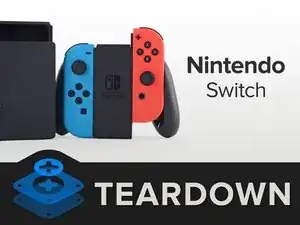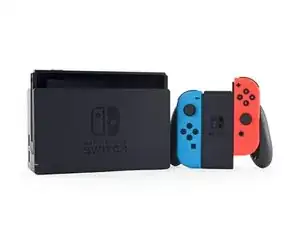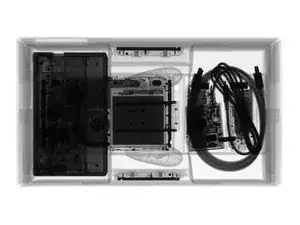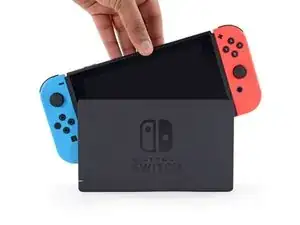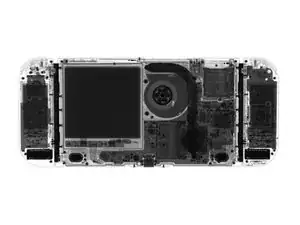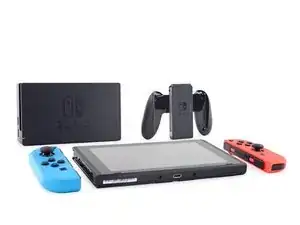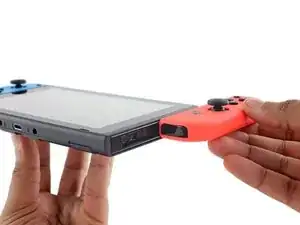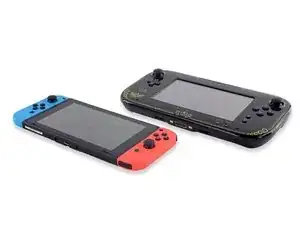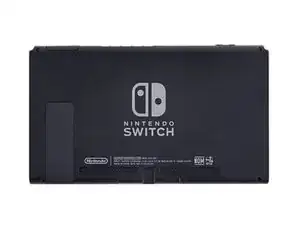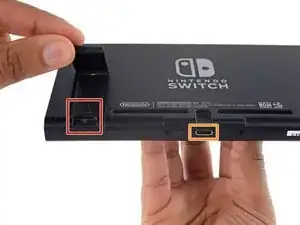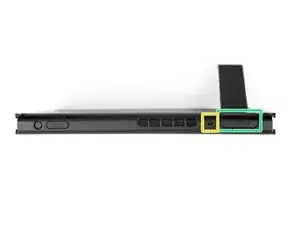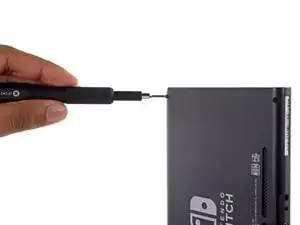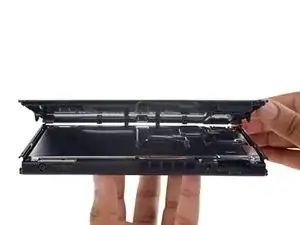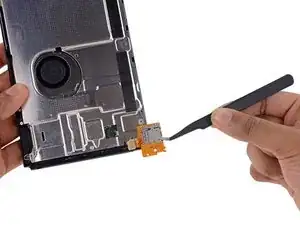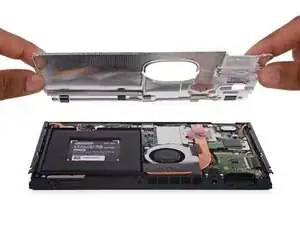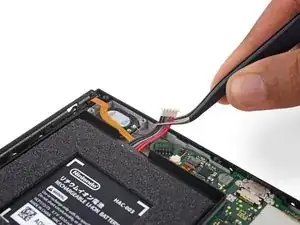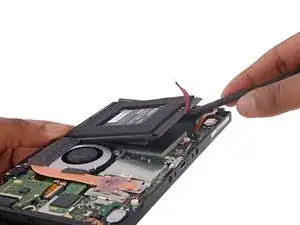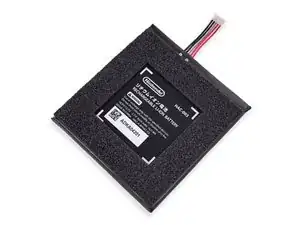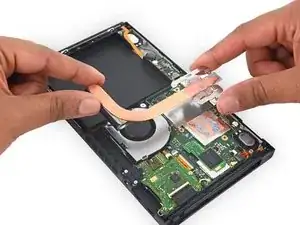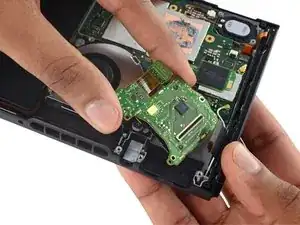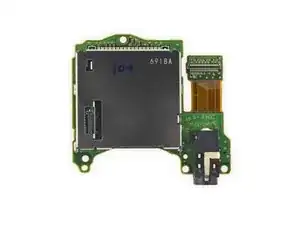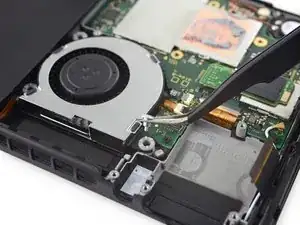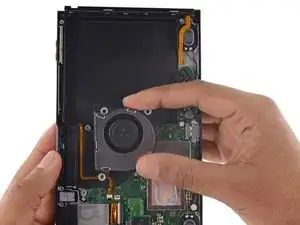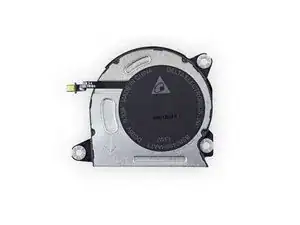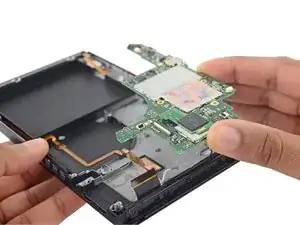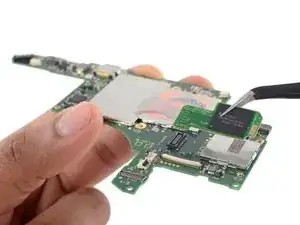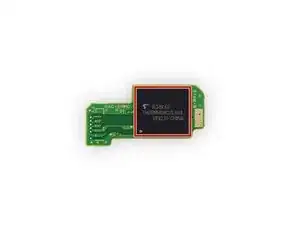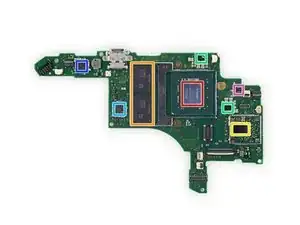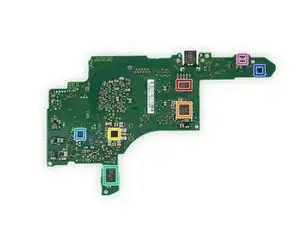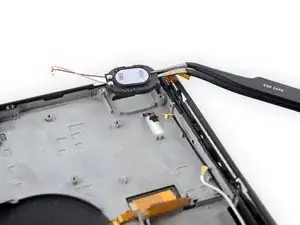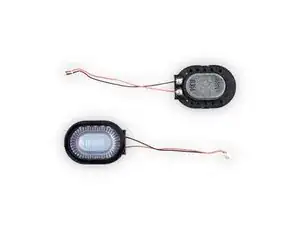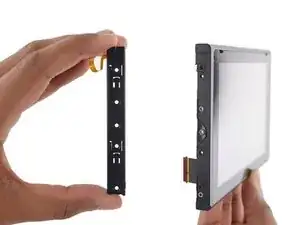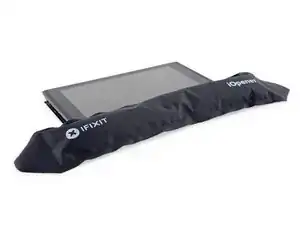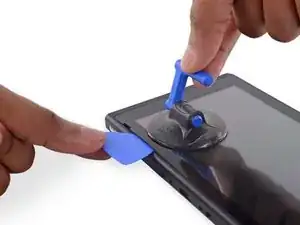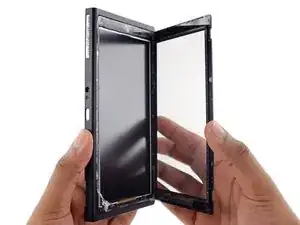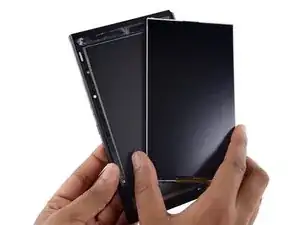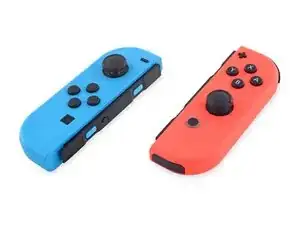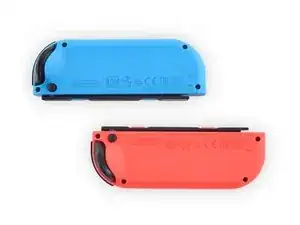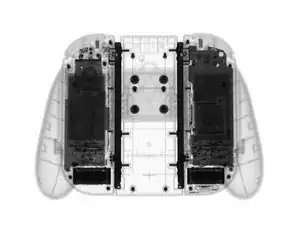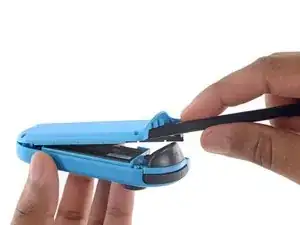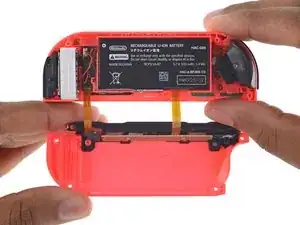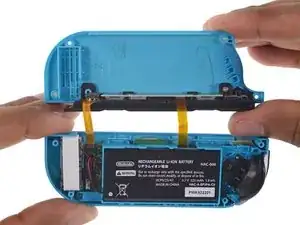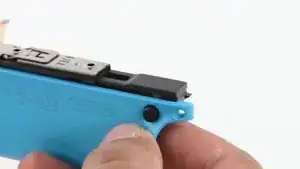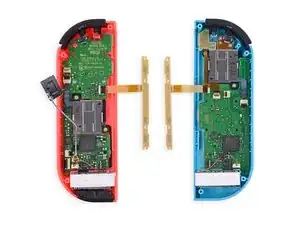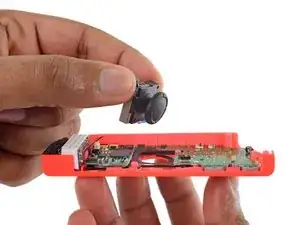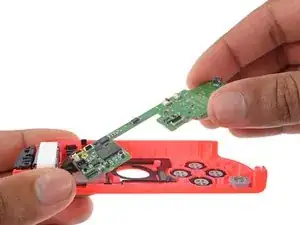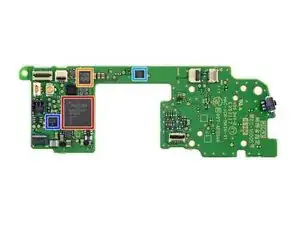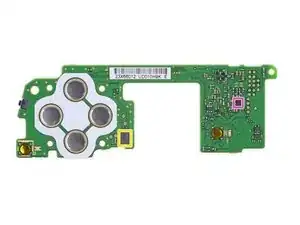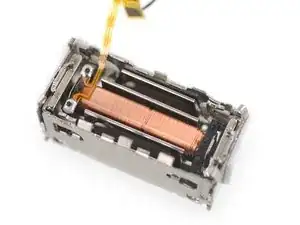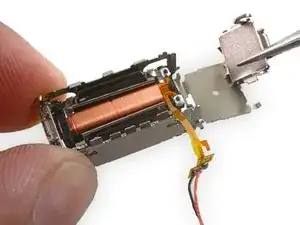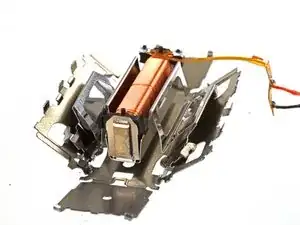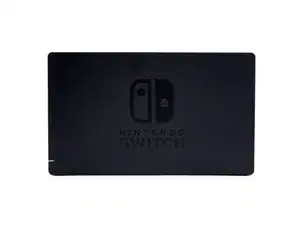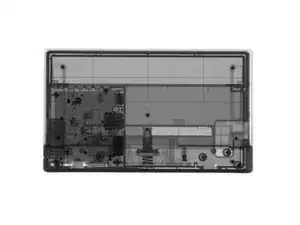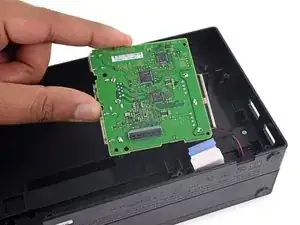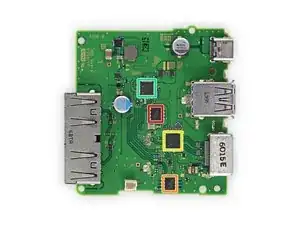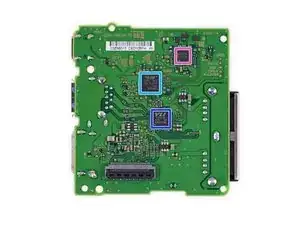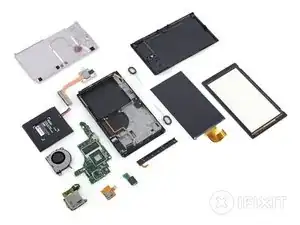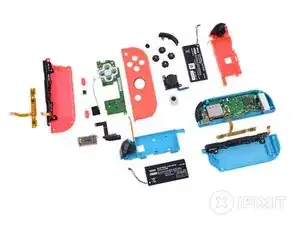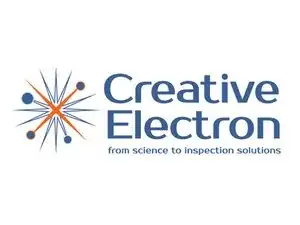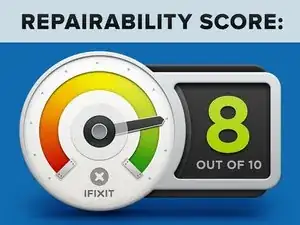Introduction
This Friday night is the moment you've all been waiting for: Nintento has finally launched its Zelda machine new console, the Nintendo Switch. Forget playing games for now, it's time to take a peek at the hardware. Let iFixit do the talking, and our tools will do the walking. Come tear down with us!
When you have to give someone else a turn to play, find us on Facebook, Instagram, or Twitter to learn something new.
Tools
-
-
Merry Switchmas everyone! Here's what Nintendo's new handheld/console hybrid holds hardware-wise:
-
NVIDIA customized Tegra processor
-
Built-in 6.2" multi-touch LCD screen with 1280 × 720 resolution (capable of 1920 × 1080 output on an external display via HDMI)
-
32 GB of internal storage (up to 2 TB additional storage via microSDHC or microSDXC card)
-
802.11 a/b/g/n/ac Wi-Fi, Bluetooth 4.1, USB Type-C charge port, and 3.5 mm audio jack on the console—plus three standard USB ports on the Switch Dock
-
Stereo speakers
-
Rechargeable lithium-ion battery capable of 2.5 - 6.5 hours play time
-
Detachable wireless Joy-Cons
-
-
-
Teardowns are really hard, so our friends at Creative Electron thought they might save us time by X-raying the entire box.
-
But that just got us more excited for a thorough hardware tour. We popped the console out of its box, and dock, and got another X-ray image just for funsies.
-
Time to switch off the X-rays and break out the tools!
-
-
-
Before we get too far, we take stock of Nintendo's offerings. We've got the console itself, two Joy-Cons, a dock, and the Joy-Con Grip.
-
With the Joy-Cons attached, the Switch console measures approximately 9.4" wide, 4" tall, and only half an inch in depth.
-
Despite added functionality, the Joy-Con'd console only weighs 0.88 pounds— less than the 1.1 pound Wii U GamePad.
-
-
-
Let's switch this teardown into gear!
-
The first thing we note is
the weird Domino's logothe model number—HAC-001. -
Doing a quick turnaround, ports include:
-
MicroSD located underneath the (surprisingly stiff) kickstand
-
USB-C (for the dock)
-
Standard 3.5 mm headphone jack
-
Proprietary Nintendo game card slot
-
-
-
Disappointingly, tri-point screws guard the entrance to
Hyrulethe Switch, but we only have to flex 1/64th of our muscle. -
Tri-points are Nintendo's version of a "Keep out" sign, but once you're past them the back cover lifts off easily—no clips or adhesive.
-
Our first peek inside reveals—nothing much. Just a metal shield.
-
However, once un-cased the modular microSD card board is readily replaceable. Good news for future storage!
-
-
-
And now for the moment we've all been waiting for...the internal reveal. It's finally happening!
-
It... looks like a computer! Battery, heatpipe, thermal paste, fan. It's all there.
-
By the looks of that purple blob, this metal plate is more than structural support. It's also a heat sink that channels heat from the heat pipe to the rear case.
-
-
-
Safety first—we dispatch the battery connector before prying this sucker off its adhesive.
-
The Switch packs a 16 Wh battery—bigger than the 5.6 Wh replaceable battery in the Wii U GamePad. Then again, this is powering a console, not just a display.
-
-
-
With battery bested, we turn to the next hardware priority: the cooling system.
-
The heatpipe is secured by simple Phillips screws, meaning thermal paste reapplication should be a breeze.
-
We aim for the fan, but looks like you can only clean it from here—it's trapped under the I/O board.
-
So we pop out the game card reader, and attached headphone jack.
-
-
-
With I/O board free, we can focus on the fan.
-
This Delta electronics fan is held in place by three screws with rubber vibration damping mounts, and is rated for 5 V and 0.33 A.
-
A fan can be a death sentence for battery life in any portable device, so it makes sense that rumors have it that the graphics are drastically underclocked when you're undocked.
-
In addition to saving power by pushing fewer pixels, this ought to also let the Switch save juice by running the fan quite a bit less.
-
-
-
This is a well-connected motherboard; to get it free, we pop off the digitizer, backlight, and speaker connectors, two antennas, and the two Joy-Con rails. And then remove six Phillips screws.
-
But hey, that's some awesome modularity. Even the eMMC storage pops off with an independent PCB!
-
Nintendo made a 6.2" tablet with removable flash storage, so don't say it can't be done.
-
The storage board contains a single Toshiba THGBMHG8C2LBAIL 32 GB eMMC NAND Flash IC.
-
Sadly, the modularity ends at the USB-C port. This high-wear component will require some intense soldering skills to replace.
-
-
-
A small gathering of
MiisICs populates the front side of the motherboard: -
NVIDIA ODNX02-A2 (presumably the Tegra X1-based SoC)
-
Samsung K4F6E304HB-MGCH 2 GB LPDDR4 DRAM (x2 for a total of 4 GB)
-
Broadcom/Cypress BCM4356 802.11ac 2×2 + Bluetooth 4.1 SoC
-
Maxim Integrated MAX77621AEWI+T three phase buck regulator (x2)
-
Rohm BM92T36 USB-C controller
-
Texas Instruments BQ24193 single cell battery charger (possibly)
-
Texas Instruments TMP451 remote/local temperature sensor
-
-
-
And on the back of the motherboard:
-
Pericom Semiconductor PI3USB30532 USB 3.0/DP1.2 matrix switch
-
Realtek ALC5639 audio codec
-
Maxim Integrated MAX77620AEWJ+T PMIC
-
B1633 GCBRG HAC STD T1001216 (probably a Nintendo secure MCU)
-
STMicroelectronics LSM6DS3H 3-axis accelerometer/gyroscope (likely)
-
Maxim Integrated MAX17050 battery fuel gauge
-
Rohm BH1603FVC ambient light sensor
-
-
-
The stereo speakers are lightly adhered to the rear case, but don't put up much of a fight.
-
Phillips screws secure a Joy-Con rail to either end of the console.
-
Each rail has a set of pin contacts that interlock with contacts on the Joy-Cons to pass charge, and button presses to the motherboard via ribbon cable.
-
-
-
Unlike a lot of modern touchscreen devices, the digitizer on the Switch is not fused to the display, meaning you can replace the two parts independently. Thanks for keeping repairability in mind Nintendo!
-
The digitizer is adhered by a double-sided adhesive strip that runs around the perimeter of the display. With a bit of heating and prying, we manage to coax the digitizer off.
-
-
-
And for the cherry on this sundae? The LCD display is easily removable!
-
With that, the console is dispatched—but we're not done yet.
-
Now where did we put those controllers...
-
-
-
Nintendo provided some color coding to remind us that these seemingly identical Joy-Cons actually house different hardware.
-
With different contents come different model numbers: The neon blue controller is designated HAC-015, while the neon red is HAC-016.
-
Neon not your thing? If you're good at stickers, you can mask their true colors with a skin.
-
... or a laptop, wireless headset, wireless printer, microwave, wireless speakers, smart watch, cordless phone—basically, this is best used in a cave.
-
-
-
Although we aren't geneticists, we bust out the
scalpelspudger to compare these fraternal twins. -
Each controller is fitted with a 1.9 Wh lithium-ion battery, Bluetooth, accelerometer/gyroscope, and a
haptic"HD Rumble" motor. -
Battery replacements certainly aren't as easy as in the original Wii Remotes, but it can be done.
-
Nintendo claims that the Joy-Con controllers offer up to 20 hours of game time, but it'll take a whole 3.5 hours to charge 'em back up.
-
If that doesn't cut it, the Joy-Con charging grip adds a battery boost as well as a (more ergonomic) grip.
-
-
-
There have been early rumors of durability problems with the rail mechanism for the Joy-Con units, so we pause for a closer look.
-
Its mate on the Joy-Con side is plastic, which is probably exactly what you want—any failure will most likely be in the detachable controller, which should be cheaper to repair or replace if necessary.
-
-
-
The controllers shed their skin for a close-up comparison. We bring you, Red vs. Blue.
-
We aren't shallow—it's what's inside that counts. The red Joy-Con comes out ahead with IR hardware and an NFC antenna.
-
You know what both have though? Two Phillips screws holding the joystick and two Phillips screws holding the board. That's what.
-
Blue, you are there for us repair folk when it counts.
-
On the bottom of each rests a hefty HD Rumble motor weighing in at 5.5 grams.
-
-
-
We lay out the controller boards in search of more silicon. Here's the feature-rich red board in all its glory (the blue board is shaped a bit differently, but has most of the same bits):
-
Broadcom BCM20734 Bluetooth 4.1/2.4 GHz Transceiver
-
STMicroelectronics ST21NFCB NFC controller
-
Macronix International MX25U4033E 4 Mb CMOS Flash
-
STMicroelectronics STM32P411 32-bit microcontroller
-
STMicroelectronics LSM6DS3H 3-axis accelerometer/gyroscope (likely)
-
Texas Instruments BQ24072 linear battery charger w/ power path management
-
Rohm BD27400GUL mono class-D audio amplifier
-
-
-
Teardown Update: Just to make sure we were getting our fill of secret sauce, we popped the top off the haptic feedback motor, a linear resonant actuator (LRA) that powers Switch's HD Rumble.
-
We took a second to pop open a Oculus Touch haptic motor and it seems to be internally identical to this one.
-
On the inside, this vibration motor seems fairly standard. It's essentially a voicecoil installed in a moving mass assembly, flanked by a pair of powerful magnets.
-
-
-
Before breaking into the Switch's home, we had our friends at Creative Electron perform some recon. We didn't want to hit any booby traps.
-
Let's be honest: that X-ray image is cooler than our findings. For all intents and purposes, the dock consists of a board in a box with a handful of ports including:
-
Two USB 2.0 Ports
-
AC Adapter Port
-
HDMI Port
-
One USB 3.0 Port
-
-
-
Dockside
fish andchips: -
Macronix International MX25L512E 512 Kb CMOS flash
-
Macronix International MX25V2006E 2 Mb CMOS flash
-
Megachips STDP2550 Mobility DisplayPort (MyDP) to HDMI Converter
-
Rohm BM92T17 USB-C power delivery controller
-
STMicroelectronics STM32P048 32-bit microcontroller
-
VIA Labs VL210 USB 3.0 Hub Controller
-
Rohm BM92T55 USB-C power delivery controller
-
-
-
It's time to hit you with
our best shotsome layout shots! Here are the Nintendo Switch's delicately laid out internals.
-
-
-
Nintendo Switch Repairability Score: 8 out of 10 (10 is the easiest to repair)
-
Aside from the digitizer, screws are used instead of adhesive to hold components in place.
-
Most components, including the analog sticks, game cartridge reader, and headphone jack are modular and can be replaced.
-
Batteries, while adhered to their housing, are modular and can be replaced by end users.
-
The digitizer and display are not fused, reducing the cost of repair but increasing complexity.
-
Proprietary tri-point screws restrict users from opening the Switch.
-
Replacing a display or digitizer requires heating and prying against strong adhesive.
-
135 comments
So there's 4GB RAM?
Yes it has 4GB of RAM in the form of 2x 16Gb (or 2 gigabyte each) Samsung LPDDR4 RAM chips.
acaaew -
Does the HD Rumble operate the same way Apple's Taptic Engine works?
Probably not. The Taptic Engine is a linear oscillator, but the Switch probably uses a 3-D oscillator: That means the weight can move freely in all three directions.
Single pair of wires means single axis of movement.
Lemming -
two wires true, but magnets are magnetized diagonally and the W shape of the spring arms gives different spring rate in X and Y. Powered, the coil moved diagonally to the corner. Once let go, it occilates in different frequencies in X and Y.
Max Chen -
surprised to learn there's 4GB of RAM
Kai -
Well it's double the RAM in the Wii U. Four times as much if you count the 1 GB used by the Wii U OS when not playing games.
But also let's not compare Apples and Oranges, ARM architecture needs much less RAM than x86 to perform well, you can't simply compare ARM, PowerPC and x86 with 4GB of RAM and think they will all have the same performance.
<<<But also let's not compare Apples and Oranges, ARM architecture needs much less RAM than x86 to perform well>>>
No it doesn't. That's just...not correct at all.
And yeah, Switch has 2x the RAM as Wii U, though who knows how much will be accessible by games. Obviously all consoles reserve some RAM, but for some reason the Wii U reserved half of it (though that still left more than 2x the RAM versus 360 and PS3, which is maybe why they didn't care that they were reserving so much).
wolfpup3 -
